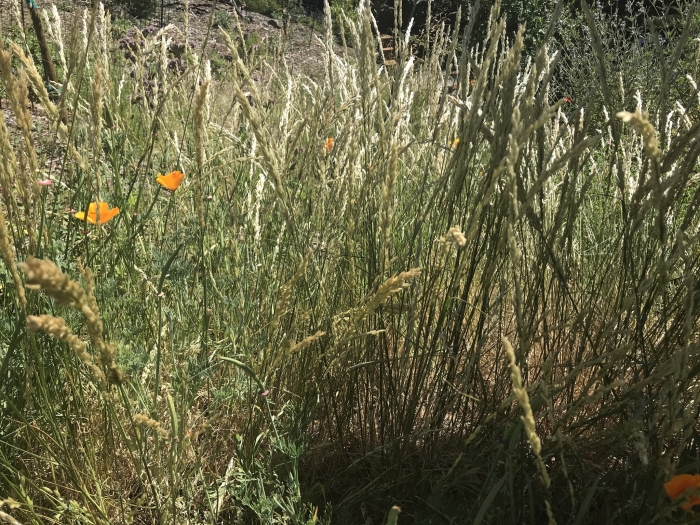California Melicgrass
(Melica californica)
California Melicgrass (Melica californica)
/
/

Miriam Sachs Martin
CC BY 4.0
Image By:
Miriam Sachs Martin
Recorded By:
Copyright:
CC BY 4.0
Copyright Notice:
Photo by: Miriam Sachs Martin | License Type: CC BY 4.0 | License URL: http://creativecommons.org/licenses/by/4.0/ | Rights Holder: Miriam Sachs Martin | Publisher: iNaturalist | Date Created: 2018-05-10T22:27:35Z |
















































Estimated Native Range
Summary
Melica californica, commonly known as California Melicgrass, is a perennial grass that is deciduous or semi-deciduous, native to open woodlands, grasslands, and chaparral regions of California and Oregon. It typically grows to a height of up to 1.3 meters (4 ft 3 in) and forms a dense clump of stems. The inflorescence consists of a narrow array of spikelets, each with a distinctive purple band on a green background, which adds subtle color to the landscape during its blooming period in late spring to early summer. The flowers are not particularly showy but contribute to the grass’s overall texture and movement in the breeze.
California Melicgrass is valued for its adaptability to various garden settings, especially in natural landscapes, native plant gardens, and areas requiring drought-tolerant or water-conserving plants. It is also appreciated for its ability to provide habitat for wildlife. While it thrives in full sun or part shade, it is remarkably drought-tolerant once established and prefers soils with good drainage. It is often used in mass plantings for erosion control or as an accent in a mixed border. Despite its benefits, gardeners should be aware that in some conditions, it can self-seed and become somewhat invasive, though it is not typically aggressive.CC BY-SA 4.0
California Melicgrass is valued for its adaptability to various garden settings, especially in natural landscapes, native plant gardens, and areas requiring drought-tolerant or water-conserving plants. It is also appreciated for its ability to provide habitat for wildlife. While it thrives in full sun or part shade, it is remarkably drought-tolerant once established and prefers soils with good drainage. It is often used in mass plantings for erosion control or as an accent in a mixed border. Despite its benefits, gardeners should be aware that in some conditions, it can self-seed and become somewhat invasive, though it is not typically aggressive.CC BY-SA 4.0
Plant Description
- Plant Type: Grass
- Height: 2-4 feet
- Width: 1-2 feet
- Growth Rate: Moderate
- Flower Color: N/A
- Flowering Season: Summer, Fall
- Leaf Retention: Deciduous
Growth Requirements
- Sun: Full Sun, Part Shade
- Water: Low
- Drainage: Fast, Medium
Common Uses
Bank Stabilization, Border Plant, Deer Resistant, Drought Tolerant, Erosion Control, Fire Resistant, Low Maintenance, Potted Plant, Salt Tolerant, Street Planting
Natural Habitat
Native to open woodlands, grasslands, and chaparral regions of California and Oregon
Other Names
Common Names: Wild Peony
Scientific Names: , Melica californica, Melica californica var. nevadensis, Melica californica var. californica, Melica longiligula,
GBIF Accepted Name: Melica californica Scribn.